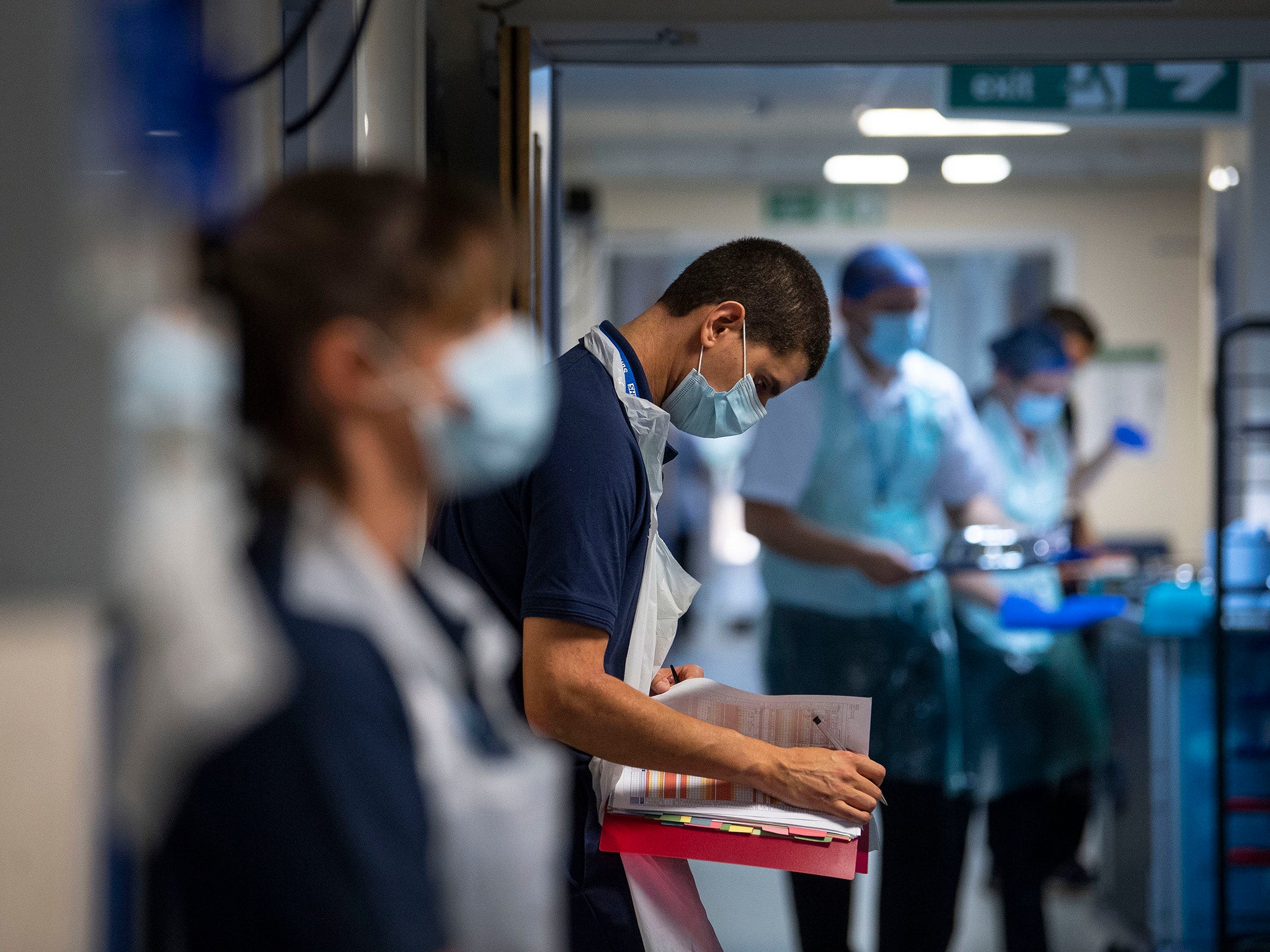Spread of coronavirus within hospitals prolonged first wave fuelling a fifth of admissions
The R-rate for Covid-19 in hospitals could have been as high as 14, a new report reveals

The scale of coronavirus spread within hospitals was so severe last year it may have prolonged the first wave and contributed to around 20 per cent of admissions, a new report has found.
The paper by Public Health England and the London School of Hygiene and Tropical Medicine found the R-number for Covid-19 specifically in hospitals could have been as high as 14 – meaning each infected staff member or patient was infecting 14 other people.
The risk of infections spreading among patients and staff in hospitals has been a major concern for frontline staff and hospital trusts.
The Independent revealed earlier this month that a number of hospitals were defying the government’s rules on protective equipment for staff, and supplying nurses and doctors with a higher grade of mask than just basic surgical masks.
Data on possible spread of Covid-19 among hospital patients between 1 August and 31 January shows more than 35,000 patients are likely to have been infected while already in hospital.
Now the new report, which was considered by the government’s Scientific Advisory Group for Emergencies (Sage) on 28 January, has estimated that between 20 and 25 per cent of all Covid-19 infections in hospital patients were nosocomial, or caused by in-hospital spread, during the first wave up to July 2020.
The report adds that while the number of infections caught in hospital may add up to only 1 per cent of total hospital cases, the numbers could still be significant.
The numbers depend on where researchers draw the line on infections picked up in hospital. Patients who tested positive 15 days after admission would account for around 7,900 infections, 9 per cent of all hospital cases in the first wave.
But if the definition is expanded to those testing positive eight or more days after being admitted, the numbers rise to 14,635, or 16 per cent of total hospital cases.
With the least conservative definition, including all positives where patients have been discharged from hospital within the previous 14 days, then the numbers reach 36,000, or 41 per cent of hospital cases.
The study also reveals the impact of in-hospital spread on local communities, with people leaving hospital infected and spreading the virus further.
It warns: “A number of the nosocomially infected patients will be discharged and lead to onward community transmission,” adding that after four generations of transmission this could mean “50,550 onward infections”, going on to say that “a proportion of these infections will progress to disease and subsequently be hospitalised.”
The report continues: “Nosocomial infections, and onward community cases due to them, may lead to a substantial number of subsequent Covid-19 admissions, representing [approximately] 20 per cent of admissions in the tail of the first wave when community prevalence was considerably lower than for most of this wave.”
It adds that in total, the contribution of nosocomial infections, and the onward transmission resulting from them, may have accounted for 31.4 per cent of overall hospital infections, and suggests that “in the last quarter of the first wave the impact of nosocomial transmission may have been to prolong the epidemic potentially by several weeks.”
The report’s authors calculate that the R-rate could have been as high as 14 in hospitals, and suggest that without the increased use of infection prevention measures and protective equipment by staff, the first wave of the pandemic would have been longer.
Last week a report by the House of Commons Public Accounts Committee criticised the government for wasting hundreds of millions of pounds on poor-quality protective equipment that left frontline staff at risk.
The report described “the appalling situation of staff having to care for people with Covid-19 or suspected Covid-19 without sufficient PPE to protect themselves from infection”.
More than 800 health and care workers have died as a result of Covid-19 infection.
A spokesperson for the Department of Health and Social Care said: “The safety of NHS and social care staff has always been our top priority and we continue to work tirelessly to deliver PPE to people who protect us all on the frontline, including staff working in hospitals.
“In response to the new Covid-19 variants that have emerged in recent weeks, the UK Infection Prevention Control Cell conducted a comprehensive review of evidence and concluded that the current guidance and PPE recommendations remain appropriate.
“New and emerging evidence is continually monitored, including on the latest variants, and reviewed by government in conjunction with our world-leading scientists.”
Subscribe to Independent Premium to bookmark this article
Want to bookmark your favourite articles and stories to read or reference later? Start your Independent Premium subscription today.

Join our commenting forum
Join thought-provoking conversations, follow other Independent readers and see their replies